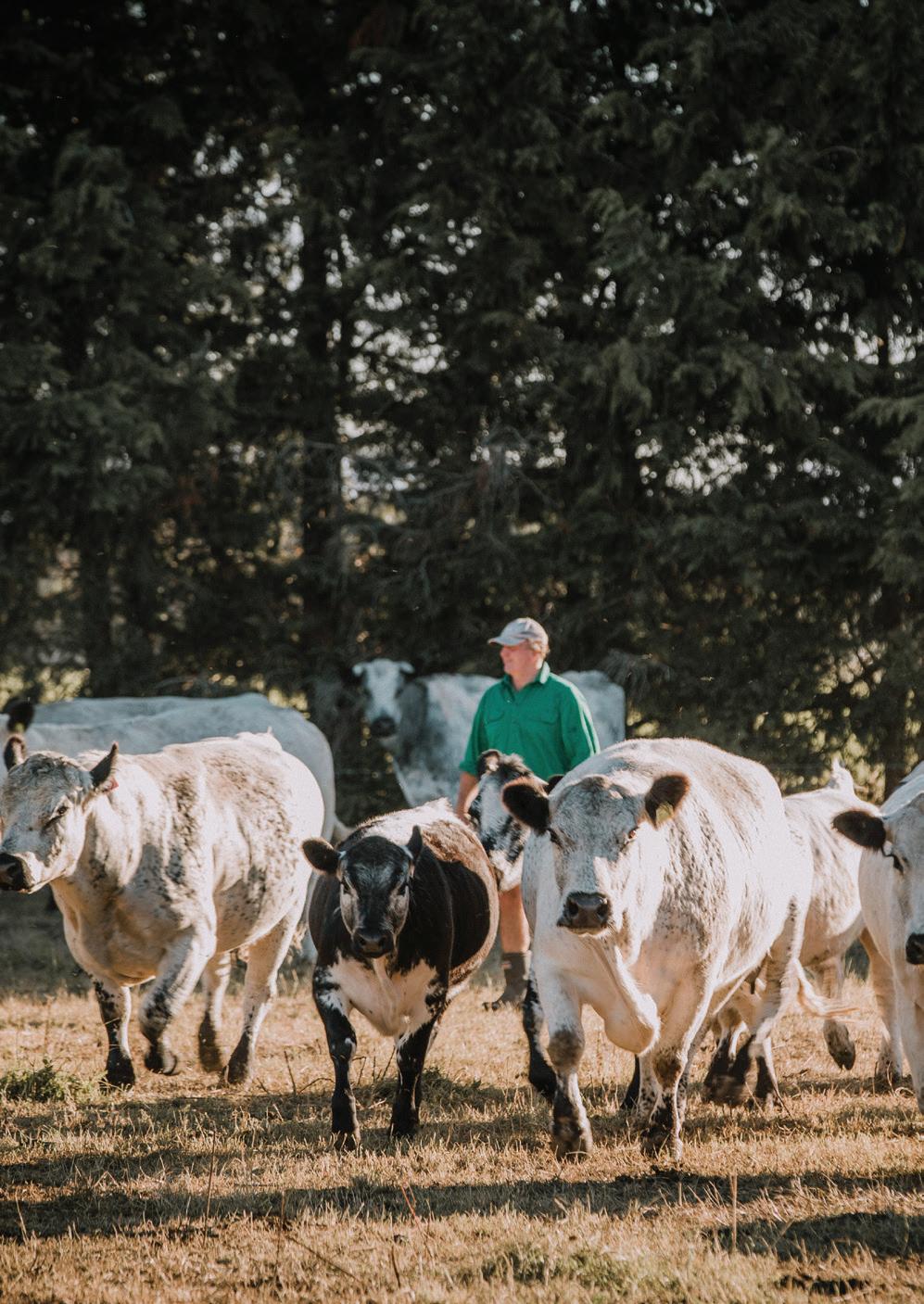FERTILISER
When every kilo counts New rules soon to come into force mean getting the most from nitrogen (N) applied is more important than ever. WORDS AND IMAGE SUPPLIED BY BALLANCE AGRI-NUTRIENTS The rules, which apply from 1 July 2021 for the 2021/22 season, cap synthetic N use at 190 kg N/ha/year on any grazed hectare of pasture (excluding forage crops). In addition, the average amount of synthetic N applied over the total grazed area (including forage crops) cannot exceed 190 kg N/ha/year. Reducing N lost via leaching and volatilisation (as the greenhouse gas ammonia) keeps N where it should be, ready for plant uptake. Applying N in the right place at the right time can reduce leaching losses, but up to 42 per cent of the total N applied can still be lost via volatilisation in pastoral situations, with losses typically between 10 and 20 per cent1. Volatilisation starts soon after urea fertiliser is applied to the soil surface. As the granules start breaking down they are ‘attacked’ by urease (an enzyme produced by soil bacteria) which converts urea into ammonium. As the urea granules dissolve, the pH of the soil in the immediate area increases, which promotes the conversion of ammonium to ammonia gas. The longer granules remain on the soil surface, the longer they are exposed to the urease enzyme, and the more N is lost. Volatilisation can happen at any time of year, including during cooler weather and in moist conditions. Moist soil or dew following application provides enough moisture to break down the urea granule and start the conversion into ammonium, but not enough to wash the N into the soil, where volatilisation is greatly reduced.
Timing urea application around rainfall or irrigation can reduce N losses by around 50 per cent, and involves applying it no more than 8 hours before at least 10 mm of rain or water is irrigated. This moves the N into the soil profile where it disperses, reducing the change in soil pH and production of ammonia gas compared to it being on the soil surface. In this case, only between 5 and 10 per cent of the applied N is likely to be lost as ammonia gas2. This approach can be inconvenient and may not be successful, whereas using a urea fertiliser with a urease inhibitor, such as SustaiN, provides flexibility of use and can be relied upon to reduce losses. SustaiN, coated with the urease inhibitor AGROTAIN®, cuts N volatilisation losses by around 50 per cent compared to standard urea3. When SustaiN is broadcast, its coating dissolves into the soil with the urea, and temporarily blocks the urease enzyme, reducing the amount of ammonium formed, and the amount of N lost as ammonia gas. SustaiN is more flexible to use, and can be applied at any time of year, exactly when a crop or pasture needs N. It also provides increased N efficiency, with research showing over a wide range of conditions the average increase in pasture yield is 5 per cent when using SustaiN instead of urea4. If sulphur is also required, it is combined with SustaiN in: • PhaSedN—a blend of SustaiN, fine elemental sulphur and fine lime to support
rapid pasture growth. SustaiN provides nitrogen for an immediate autumn boost, while the fine elemental sulphur remains in the soil over winter and releases in early spring to support that key growth phase. • PhaSedN Quick Start—contains two types of sulphur (sulphate for a quick boost, and elemental sulphur for slow-release) and two types of N (urea from SustaiN and ammonium from SOA) which are both immediately available for plant uptake. Costing about 10 per cent more than standard urea, SustaiN is a cost-effective and environmentally responsible way of protecting investment in N fertiliser, in a regulatory environment where making every kilo of N count is essential. For more information contact your local Ruralco Representative. Theobald PW, Ball PR 1984. Nitrogen lost by ammonia volatilisation, and the effectiveness of urea and ammonium sulphate fertilisers, Proc. NZ Grassland Assoc. 45: 236-8 2 Saggar S, Singh J, Giltrap DL, Zaman M, Luo J, Rollo M, Kim D-G, Rys G, Van der Weerden TJ 2013. Quantification of reductions in ammonia emissions from fertiliser urea and animal urine in grazed pastures with urease inhibitors for agricultural inventory: New Zealand as a case study, Sci. Total Env. 465: 136-46 3 Zaman M, Saggar S, Stafford AD 2013. Mitigation of ammonia losses from urea applied to a pastoral system: The effect of nBTPT and timing and amount of irrigation. Proceedings of the New Zealand Grassland Association 75: 209-214 4 Stafford A, Catto W, Morton JD 2008. Ballance Agri-Nutrients approach to sustainable fertiliser use. Fertiliser and Lime Research Centre, Massey University, Occasional Report No. 21: 197-205 1
RE A L FA RM E R
29



















